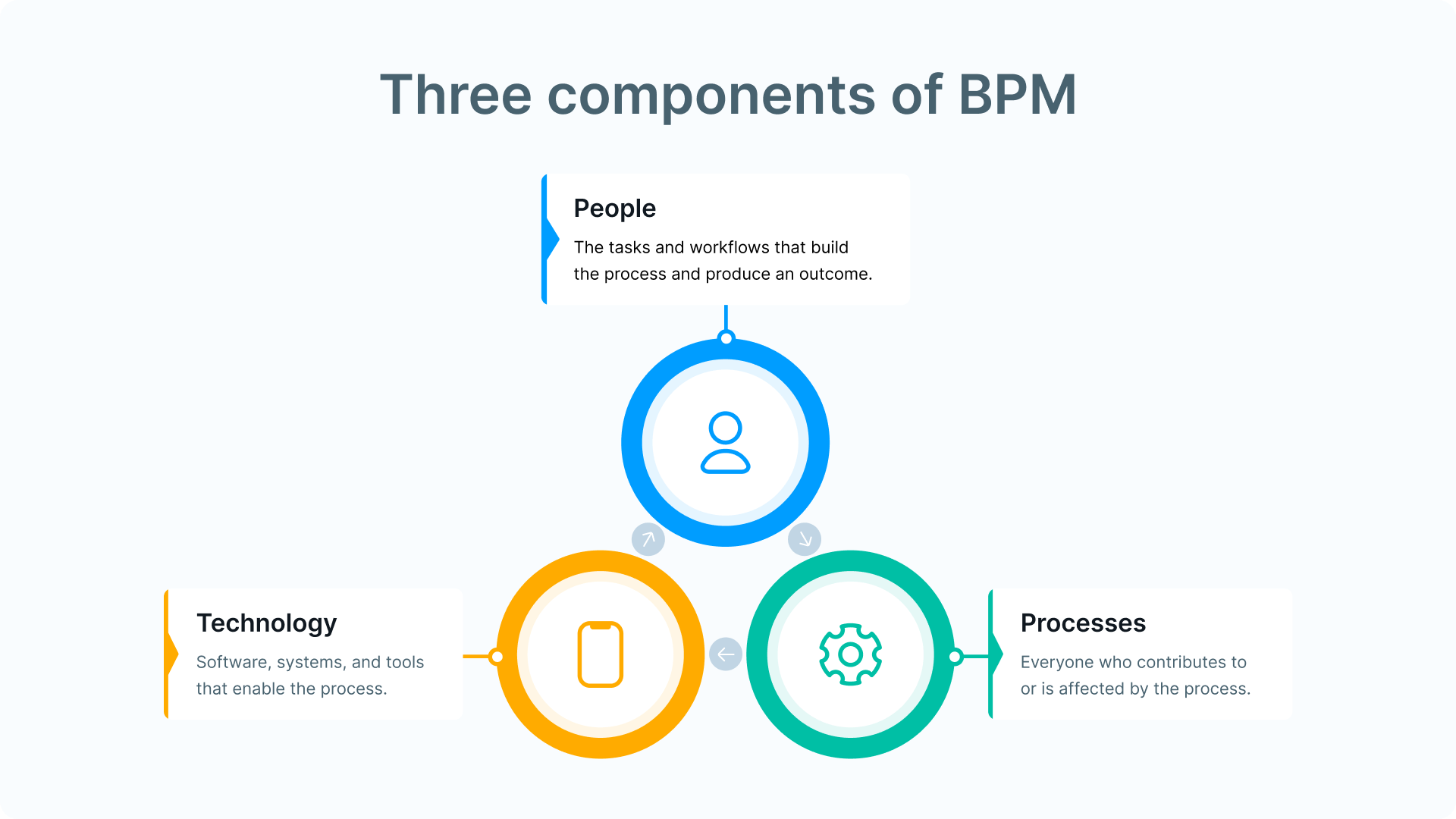
Visits: 10
The Power of Business Process Management Solutions (BPMS)
Business process management software (BPMS) plays a crucial role in helping companies streamline, model, and optimize a series of activities and tasks aimed at achieving organizational goals. These activities, collectively referred to as business processes, span various departments and involve both human and automated tasks. BPMS, often known as a business process management suite, is a comprehensive technology solution designed to support business process management (BPM) practices, focusing on enhancing end-to-end business processes. The Power of Business Process Management Solutions (BPMS)
Key Components of BPMS:
- Process Mining Tools:
- Used for discovering, representing, and analyzing the tasks within business processes.
- Business Process Modeling Notation (BPMN):
- Enables the graphical representation of business processes.
- Workflow Engines:
- Automate the flow of tasks to complete a business process.
- Business Rules Engines:
- Allow end users to modify business rules without coding assistance.
- Simulation and Testing Tools:
- Used for observing process behavior without actual coding.
Intelligent BPM Suite (iBPMS):
In recent years, the evolution of BPMS has given rise to the intelligent BPM suite (iBPMS). This advanced version incorporates technologies such as real-time analytics, complex event processing, business activity monitoring, and artificial intelligence (AI), making process automation more dynamic and data-driven.
Low-Code/No-Code (LCNC) Technology:
The increasing adoption of low-code/no-code technology within BPMS empowers business analysts and users to actively participate in optimizing business processes without relying solely on professional coders.
BPM’s Continuous Improvement Framework:
BPM is not a one-time project; it provides a framework for continual improvement, analysis, and creation of business processes. It focuses on achieving three outcomes:
- Clarity on strategic direction.
- Alignment of firm’s resources.
- Increased discipline in daily operations.
Benefits of BPM and BPMS:
Implementing a successful BPM program with BPMS helps enterprises:
- Accelerate time to market.
- Improve cost, productivity, and quality.
- Enhance customer service levels and satisfaction.
- Streamline business processes.
- Manage risks and meet compliance regulations.
- Introduce new process designs faster.
- Cut costs and increase revenues.
Features of BPMS:
Standard features include:
- Process engines for modeling processes and web applications.
- Data collection and business analytics.
- Content management systems for securely storing files.
- Collaboration tools, including social collaboration software.
- Cloud or on-premises deployment.
- User interfaces.
Evolution and Trends:
BPMS tools have evolved, with modern platforms emphasizing:
- LCNC development platforms.
- Integration of robotic process automation (RPA) and AI.
- Flexibility to handle complex, long-running processes.
- Support for emerging technologies.
- Modern application architecture for cloud-first approaches.
Vendor Landscape:
Evolved BPMS vendors fall into three categories:
- Established BPM vendors: Appian, Bizagi, IBM, Oracle, Pega, Tibco.
- Enterprise software vendors with BPM capabilities: Microsoft, SAP, ServiceNow.
- Open source BPMS vendors: Bonitasoft, Camunda, ProcessMaker, Red Hat.
Conclusion:
While BPM software proves essential for businesses, challenges exist. The evolving landscape, incorporating LCNC, RPA, and AI capabilities, reflects the ongoing commitment to enhancing BPM practices and facilitating digital transformation initiatives.
For more information on BPMS and related topics, explore the complete guide.


%20(1).png)


